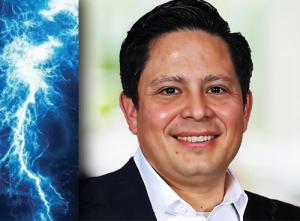Guidehouse
Santos Garza Romero is a natural gas and power industry executive with twenty-plus years of international experience in the power and natural gas markets, as well as in infrastructure development, corporate planning, electrification value chains, strategy and energy consulting, and commercial negotiations and capital investment evaluations for energy commodities.
He has supported the technical and commercial development of more than ten gigawatts of traditional and renewable power generation projects internationally, including a three gigawatt, liquefied-natural-gas-based energy generation hub in Brazil.
Santos received an MBA from the Kellogg School of Management at Northwestern University and a BSc in chemical and systems engineering from the Monterrey Institute of Technology (Tecnólogico de Monterrey) in Monterrey, Mexico.
Given the all-of-the-above generation buildout strategy that many utilities are embracing, how should they streamline their transmission planning and interconnection approaches?

Santos Garza Romero: Before FERC Order 2023, utilities and balancing authorities reviewed interconnection applications in series, looking at generation and load projects individually in their respective interconnection queues.
As the number, size, and type of projects began growing and changing, this approach became unsustainable. According to the Lawerence Berkeley National Laboratory, new generating capacity entering the queues grew from one hundred twenty-seven gigawatts in 2010 to nine hundred eight gigawatts in 2023.
Looking for a new approach, utilities must first limit the size of each queue. At the same time, they must train and develop a workforce and implement software tools to analyze and manage the queue process, and capable hardware to handle the increased computational demands – as MISO has done by adopting Pearl Street’s SUGAR tool.
At least in the early phases of a study, utilities must develop automated tools for qualifying and quantifying the upgrade requirements for interconnecting the cluster, though generation projects increasingly require specialized studies, such as electromagnetic transients. All of these tests should occur before they are mandated by requirements such as the high penetration of inverters.
Depending on the number of clusters analyzed each year, a utility could transfer the results into its annual transmission planning process, combining to capture benefits from new load, generation, and transmission all in one model. The transmission plan will capture necessary grid upgrades along with the CAPEX needed to implement them.
Producing a transmission plan is an arduous process that can vary annually because of changes in regulatory frameworks, load growth, or power consumption profiles, so utilities must design and implement tools and processes that constantly revise key assumptions and automate their modeling.



